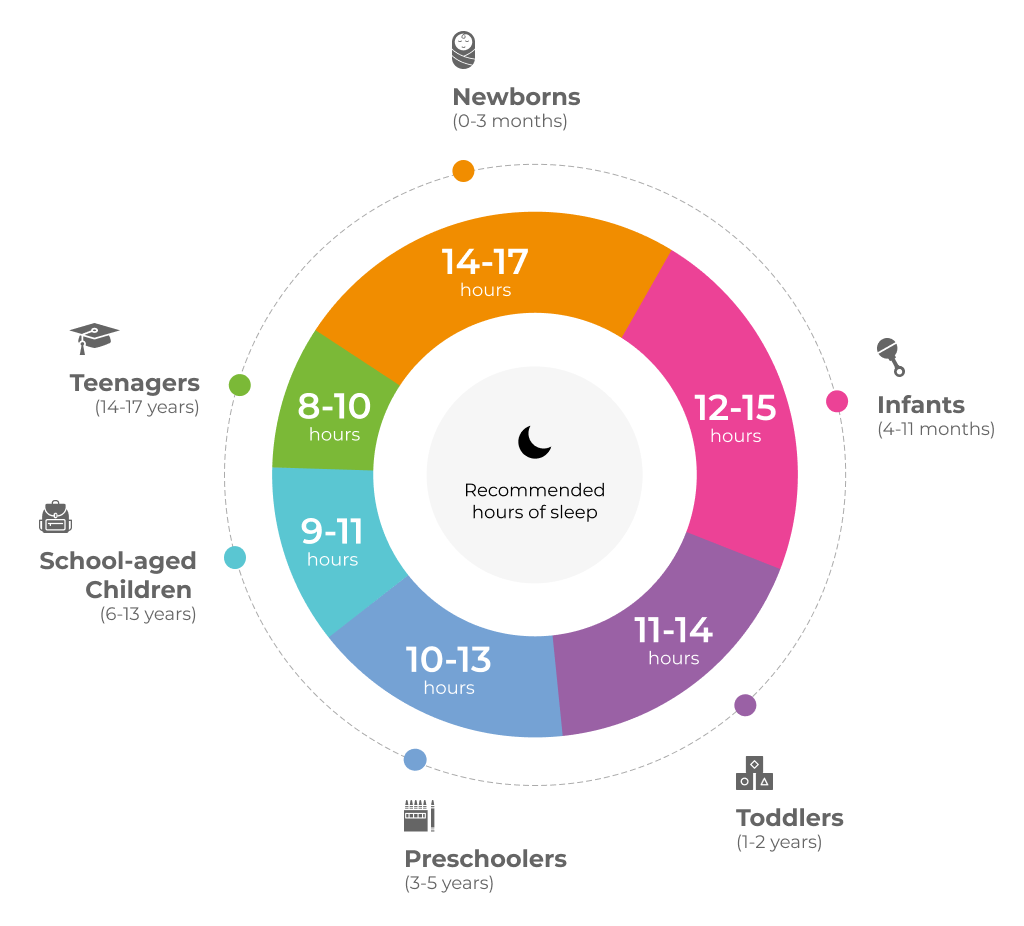It may not always be easy for kids to wind down in the evening, or get off to sleep once in bed – which can be a tricky situation for well-intentioned (but worn-out) parents. Creating a nightly routine can help to develop associations that prepare your little ones for bedtime. Kids thrive on structure, as it offers them a sense of safety and security. Try a wind-down period that begins 30 minutes before bedtime – you could play soft music, turn down the lights, and finish up any energetic activity. Whatever you choose as your ‘signposts’ that sleep is on the way, consistency is the key. So put on your PJ’s, pull up the covers, and join us for some tips on how to help little bunnies hit the hay.
The Magic Number. It’s important to know just how much sleep your child needs, as different ages require different amounts. Whether that’s hours per night, or naps and nights combined, understanding your child’s sleep needs will help you set daytime and bedtime routines for them. While each child’s individual needs may vary, this chart offers some helpful guidelines:

Jump Around. It’s important that your children get plenty of exercise during the day which will help them wind down more easily at night. However, try to keep the last activity of the day at least 3 hours before bed– or it could keep them too lively to sleep.
Close the kitchen. It’s best to leave some time between dinner and bedtime, especially foods or drinks high in sugar. If you do allow your child the occasional soft drink, make sure they are finished at least 1-2 hours before trying to sleep. Bedtime snacks are completely acceptable, as long as they’re fairly healthy and not too large. Lots of sugar– or large meals late at night– can interfere with sleep. The old standby? A warm glass of milk (or almond milk) with a little honey still ticks all the boxes.
Lights Out. Switch off screens 1-2 hours before bed. Blue light from screens can interfere with circadian rhythms by blocking melatonin production – the hormone that signals sleepiness and relaxation. Try setting a ‘bedtime’ for kids’ phones and tablets– put devices away in a special, dedicated box or container and place it out of reach. If this sounds like a stretch, there are many parental control apps that can be installed on devices – that allow you to set a bedtime for particular features. Instead of movies or TV, why not try books? Bedtime stories are one of the easiest and most effective ways to help little ones drift off peacefully.

Sleep Setting. Create an ideal sleeping environment. It’s best to keep kids’ rooms dark, quiet, and cool at night. Some children (especially the very young) want a little light, and a nightlight or dim lamp is fine. If they can’t sleep in silence or are kept awake by noises from the rest of the house, use a noise machine or a fan to create a soft, rhythmic sound.
Sweet Dreams!
Sources:
- The National Sleep Foundation. How Much Sleep Do Babies and Kids Need? sleepfoundation.org
- University of British Columbia (2018, December 3). Importance of good sleep routines for children. ScienceDaily. Retrieved September 30, 2019 from ScienceDaily
- American Academy of Sleep Medicine. “Children sleep better when they have a nightly bedtime routine”. ScienceDaily, May 7, 2015.
- Jodi A.Mindell, Albert M.Li, Avi Sadeh, Robert Kwon, Daniel Y.T. Goh. Bedtime Routines for Young Children : A Dose-Dependent Association with Sleep Outcomes. Sleep,2015; DOI.
- Harvard Health Publishing. Blue light has a dark side, what is blue light ? The effect blue light has on your sleep and more. Published May 2012. Updated August 2018.
- The Health Impacts of Screen time : a guide for clinicians and parents. Published January 2019.












